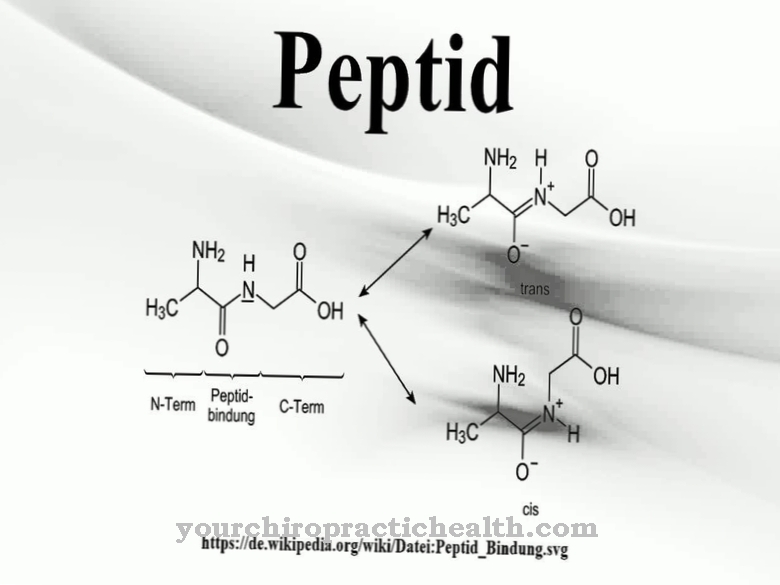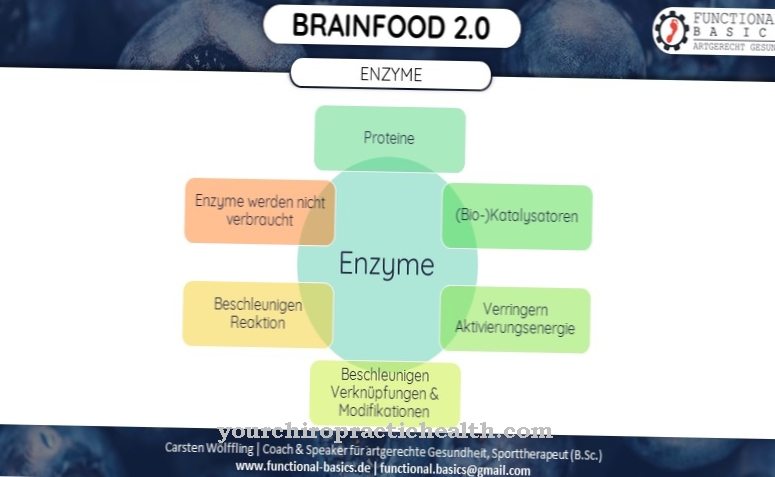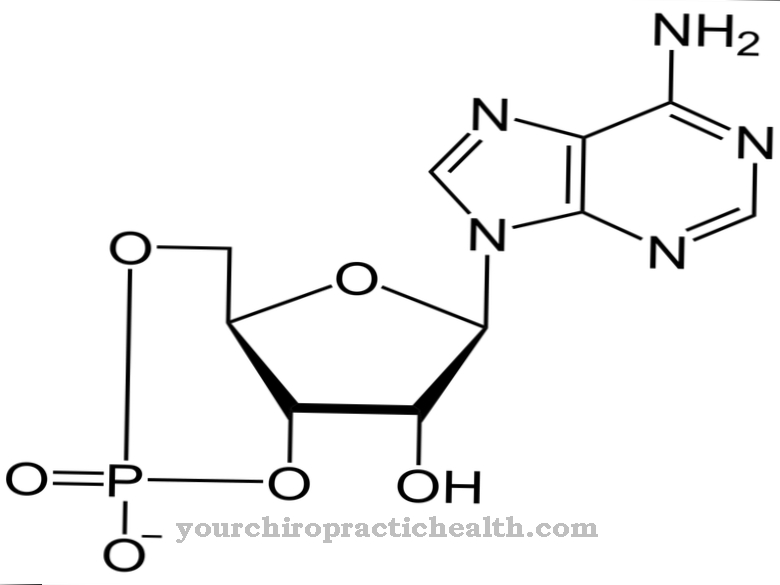Hydroxyapatite represents a mineral from calcium hydroxyl phosphate. Overall, the mineral is not widespread, although there are individual rich deposits. The bones and teeth of vertebrates also consist to a high percentage of hydroxyapatite.
What is hydroxyapatite?
Hydroxyapatite consists of hydroxylated calcium phosphate. In the crystal, five calcium ions are linked to three phosphate ions and one hydroxyl ion. It is an ionic compound that crystallizes out in a hexagonal crystal system.
The hydroxyl group stabilizes the entire crystal. With fluorapatite and chlorapatite, hydroxyapatite forms a seamless mixed series. Hydroxyapatite occurs as an accompanying mineral in various minerals such as serpentinite, talc shale or pegmatite. The mineral has so far been detected in approximately 250 locations. The appearance of the individual minerals depends on the composition and the mixing ratio with other accompanying minerals.Hydroxyapatite also occurs within living things. The bones and teeth of vertebrates in particular are made up of a high percentage of this mineral.
In addition to hydroxyapatite, they also contain organic material in the form of connective tissue and cells. Due to the almost pure mineral content, the tooth enamel is the hardest material in the organism. Its hydroxyapatite content is over 95 percent. The formation of hydroxyapatite takes place within the framework of biomineralization. The material is very stable and extremely resistant to physical and chemical influences. Bones and teeth represent an important archive of the living environment. Only acids, including fruit acids, slowly decompose hydroxyapatite.
Function, effect & tasks
In the human organism, hydroxyapatite is the most important supporting substance. It gives the skeletal system the necessary strength. Together with special connective tissue material such as collagen, the necessary tensile strength and stability are created in the bones, for example.
The composition of bones and teeth is different. The decisive factor here is the proportion of hydroxyapatite. Bones are made up of about 65 percent of the mineral. The rest is made up of collagen and osteoblasts. The amount of hydroxyapatite in the teeth is much higher. Therefore the teeth are much harder than bones. The function is decisive for the composition. The bones belong to the musculoskeletal system. Their different exposure to mechanical forces requires a certain flexibility. The teeth are used to crush food.
This requires a much stronger force and strength, which must also be reflected in a harder material. The teeth consist of the outer tooth enamel, dentin and tooth pulp. Tooth enamel has to be very firm and hard and is therefore made up of more than 95 percent hydroxyapatite. This makes it extremely resistant to external influences. Dentin is a bone-like substance. It consists of 70 percent hydroxyapatite. Most of the rest is connective tissue. The tooth pulp or pulp is a network of blood vessels and nerves that supply the tooth.
Education, occurrence, properties & optimal values
The hydroxyapatite of bones and teeth is formed as part of biomineralization. In geological terms, biomineralization is already an old process. Ancient bacteria also formed limes several billion years ago. The process is still similar today. Certain cells take up the ions of the mineral in the dissolved state.
The mineralization takes place by saturating the solution with the corresponding ions. In the case of hydroxyapatite, these are calcium and phosphate ions. So-called osteoblasts are responsible for mineralization in bones. During mineralization, they develop into osteocytes that are no longer able to divide and form a network within the solidified mineral. Biomineralization takes place in the teeth in a similar way. Here the odontoblasts are responsible for mineralization.
Diseases & Disorders
Hydroxyapatite is very stable. But within the bones there are constant building and breakdown processes. The shape of the bone has to adapt to very different requirements. So new bone substance is constantly built up. However, there is always a breakdown of bone substance.
If the breakdown process predominates, what is known as osteoporosis develops. The processes are controlled by hormones. The parathyroid hormone is responsible for the balanced calcium level in the blood. If there is a calcium deficiency, it activates the mobilization of hydroxyapatite from the bones. The hormone calcitriol is responsible for the absorption of calcium from food in the intestine and mineralization in the bones. Both hormones are antagonists. If calcium absorption from food is disturbed because only a small amount of calcitriol is formed due to a lack of vitamin D, bone resorption outweighs bone formation. The bone density decreases and at the same time the fragility of the bones increases.
However, these processes are very complicated and in many cases not yet fully understood. Hydroxylapatite can also be broken down in the teeth. However, these are not hormonal processes. Physiologically, the tooth should last as long as possible in order to be able to crush the food. However, bacterial decomposition of food residues forms acids that can attack tooth enamel. The acid dissolves hydroxyapatite into calcium ions and phosphate ions, whereby the hydroxyl ion reacts with a hydrogen ion of the acid to form water. Calcium ions and phosphate ions then dissolve in water.
A protracted bacterial activity and constant acid formation eventually create a hole in the tooth enamel. Without treatment, tooth decay will destroy the tooth. However, by using toothpaste containing fluoride, hydroxyapatite can be converted into the much more stable fluorapatite. This makes it possible to stop the process of tooth destruction for a longer period of time.


.jpg)










.jpg)

.jpg)
.jpg)











.jpg)